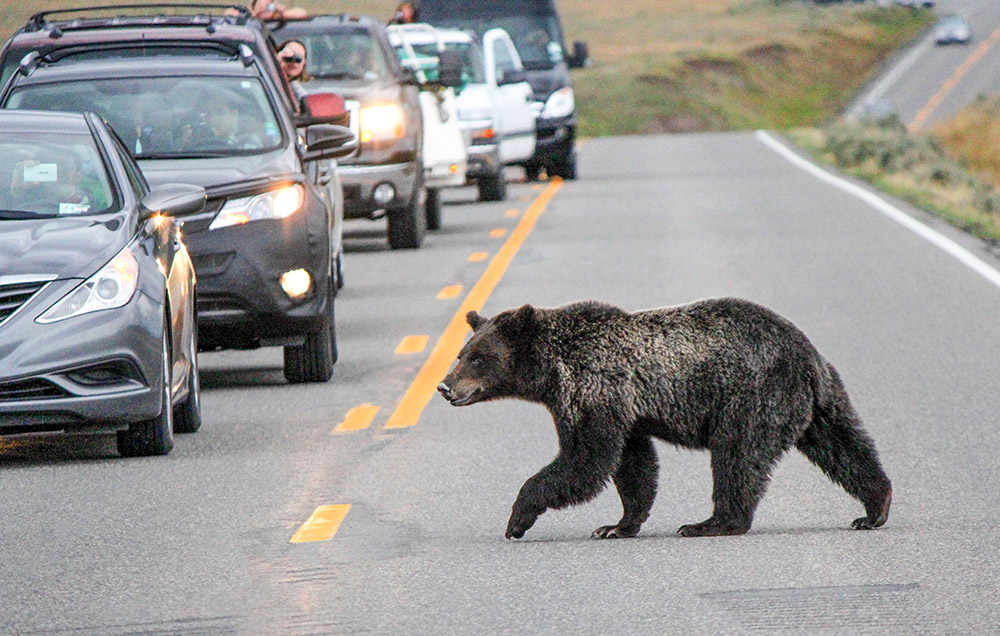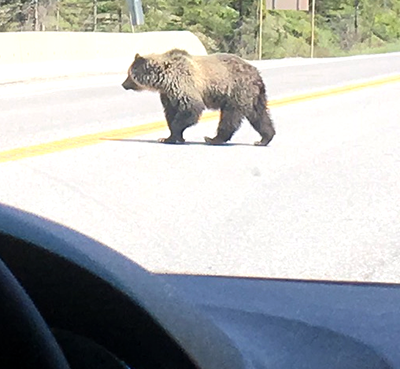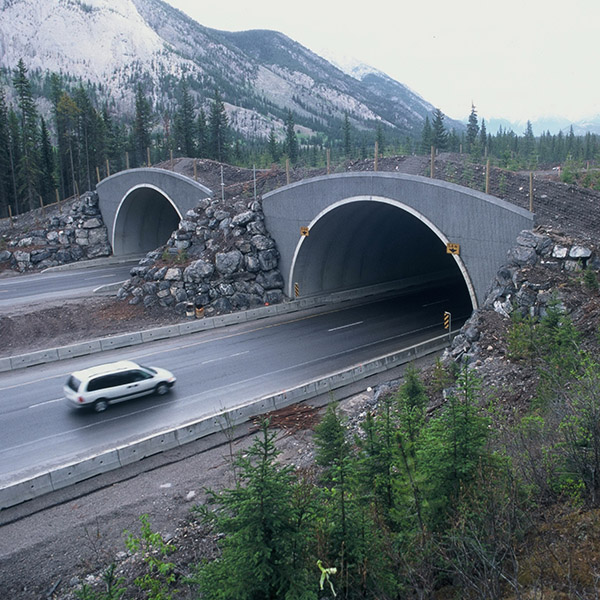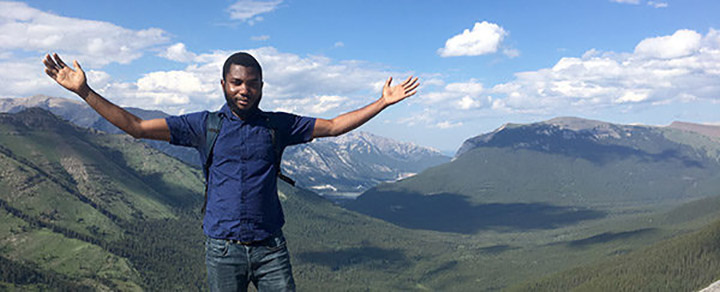Wildlife crossing structures in the Bow Valley: Helping connectivity and fostering human-wildlife coexistence
Trading in the sounds of Ghana’s monkeys for Canada’s squirrels, Elvis Acheampong, a conservation science intern from Connecticut’s Yale University originally from Ghana, spent his summer in Canmore, Alberta.
Not surprisingly, Elvis was “awestruck” by the majestic peaks that carve out the skyline, and the wildlife that roam the valley.
He experienced many firsts, from hiking and rafting to trail running in the Rockies. He says that recreational outdoor activity is not a big part of the culture in Ghana.
But here, “the many hiking and biking trails available in the valley encourages people to get outside and enjoy the beauty of nature and its healing power,” Elvis explains. Even more impressive to him was how the community integrates conservation and recreation — something not yet done in his home country.
Another first for Elvis was seeing a grizzly bear while driving with Y2Y staff on Highway 93 in Kootenay National Park near Radium Hot Springs — something he’d only seen in movies or read about in books.
After pulling over at a safe distance, the group watched the bear feed for some time before it crossed the road. “That beautiful bear could have been run down even in the park,” he says.
This experience inspired Elvis to write the following blog post about his experience and what it was like to intern with Y2Y.
As an environmentalist from Ghana and having lived and worked in very remote regions of West Africa, I am fortunate to have seen diverse wildlife and woodlands. So while the Bow Valley’s beautiful landscape and rich biodiversity is pretty interesting, it’s not something new to me.
What fascinates me the most are the myriad of measures applied in this part of Canada to safeguard wildlife, as well as to facilitate coexistence between wild animals and humans — something not yet widespread in Africa.
Key among these measures is the many wildlife crossing structures (under- and overpasses) constructed at strategic locations along some major roads.
By helping animals to safely cross the highway, these structures prevent roadkill and vehicular accidents, and also facilitate ecological connectivity between similar habitats. This is important because it can be hard for wildlife to cross highways safely: they are at risk of being hit by vehicles (injured or killed) or be deterred from attempting to cross altogether.
Crossing structures can help improve ‘gene flow’ and maintain healthy animal populations, both in Alberta’s Bow Valley and throughout the Y2Y region more generally. (Clevenger and Waltho, 2005)

This is especially critical for the survival of large carnivores whose presence are needed to facilitate stable ecosystems: loss of top predators can negatively affect entire food web (Staddon et al., 2010).
For example, fewer large predators can result in the increase of medium-sized predators and herbivores (Ripple et al., 2014), which can in turn affect plant populations and other ecosystem interactions. Owing to the enormous benefits of these structures in protected areas, the ones in Banff National Park, for example, serves as a model that is being replicated to complement efforts by conservationists, protected area managers, and citizens to reduce the negative impacts of highways on wildlife.

The best moment of my stay in Canada was my first sighting of a grizzly bear while driving on Highway 93 close to Radium Hot Springs. (See photo to left.)
I was particularly excited because there are no bears in West Africa. I had only seen them in movies and read about them in books while growing up in Ghana.
We pulled over, remained calm and enjoyed watching the huge creature feed at the side of the highway for a few minutes before crossing majestically to the other side of the road. It was a beautiful sight to behold!
Aside the beauty of the seeing a bear for the first time, my greatest takeaway was the fact that, although there are structures to facilitate easy crossing of roads by wildlife in the valley, there is still more room for improvements. The structures may not be enough or their positions may not be entirely accurate — and there are many places that lack crossing structures altogether. That bear could have been run down by a vehicle.

Alhough similar wildlife crossing structures can be found in northern Kenya, East Africa, to facilitate elephant and other wildlife connectivity across highways, such structures are not widespread in Ghana, and West Africa in general.
I am of the strong opinion that these wildlife bridges — in Kenya and Alberta’s Bow Valley are great models that can be studied and replicated in Ghana and other parts of West Africa to enhance conservation efforts. Additionally, albeit there are some wildlife sensitization efforts in Ghana by the Ghana Wildlife Society, there is more to be done to make people friendlier to wildlife and support the course of conservation.
My six-week internship in the Bow Valley has been awesome. Working with Y2Y has provided me a great opportunity to lean from some of the best experts in the conservation landscape. I have benefited from great insights from scientists and non-scientists and had a first-hand experience with practical conservation in some of best places to study conservation science in the world.
Although I feel more equipped with the needed skills to help champion some of these ideas in Ghana, I intend taking more courses in the subject matter to hone the skills I acquired while interning in the Bow Valley.
Elvis begins his second year of his master of science in environmental management program at Yale University in the fall. Funding for his internship, which helped him to map Y2Y partnership projects from Yellowstone to the Yukon over the summer, comes from the Carpenter Sperry Fund and Yale School of Forestry.
Clevenger, A. P., & Waltho, N. (2005). Performance indices to identify attributes of highway crossing structures facilitating movement of large mammals. Biological Conservation, 121(3), 453-464. doi:10.1016/j.biocon.2004.04.025
Ripple, W. J., Estes, J. A., Beschta, R. L., Wilmers, C. C., Ritchie, E. G., Hebblewhite, M., Wirsing, A. J. (2014). Status and Ecological Effects of the World’s Largest Carnivores. Science, 343(6167). doi:10.1126/science.1241484
Staddon, P., Lindo, Z., Crittenden, P., Gilbert, F., & Gonzalez, A. (2010). Connectivity, non-random extinction and ecosystem function in experimental metacommunities (Vol. 13).


